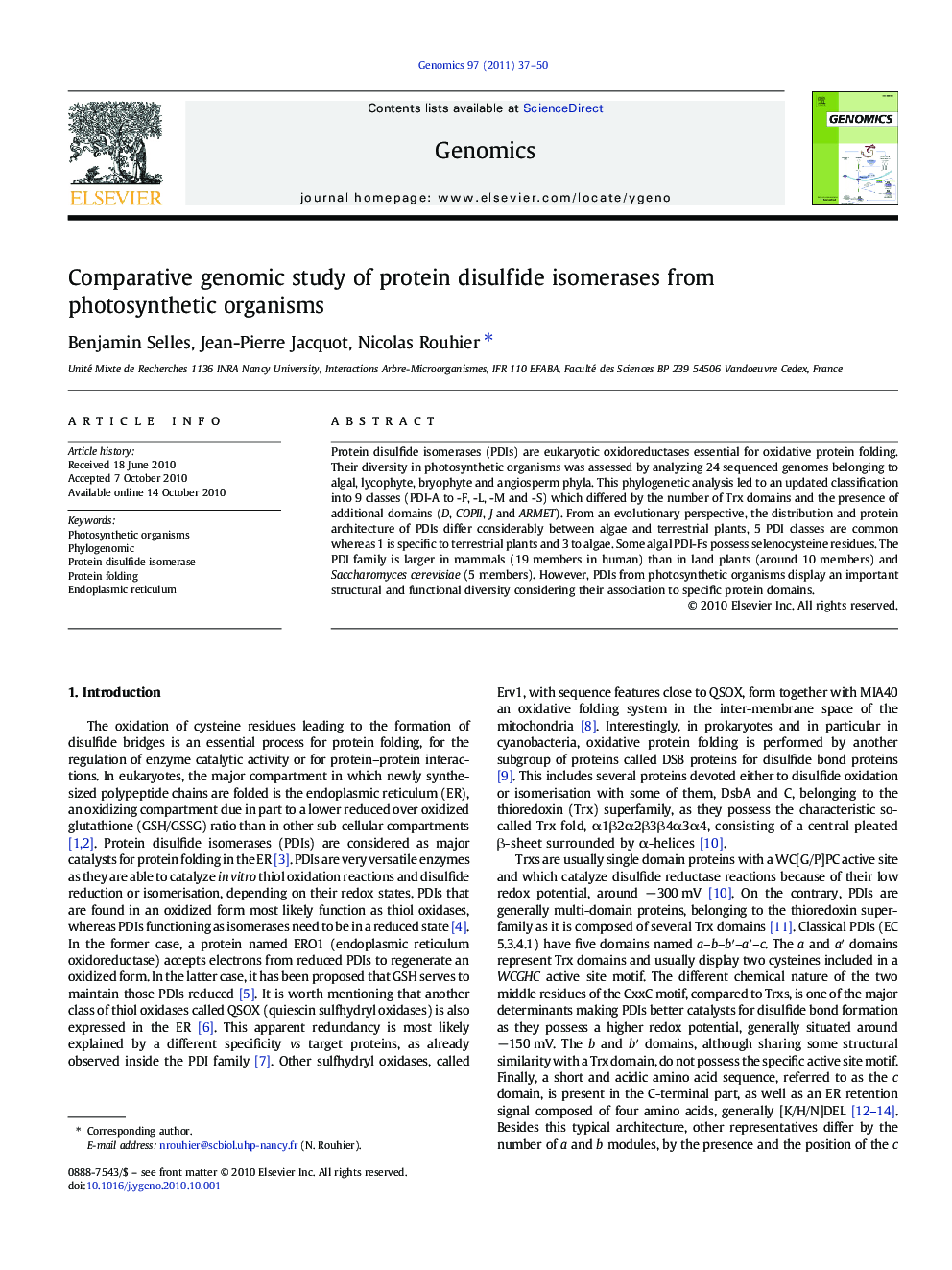| Article ID | Journal | Published Year | Pages | File Type |
|---|---|---|---|---|
| 2821372 | Genomics | 2011 | 14 Pages |
Protein disulfide isomerases (PDIs) are eukaryotic oxidoreductases essential for oxidative protein folding. Their diversity in photosynthetic organisms was assessed by analyzing 24 sequenced genomes belonging to algal, lycophyte, bryophyte and angiosperm phyla. This phylogenetic analysis led to an updated classification into 9 classes (PDI-A to -F, -L, -M and -S) which differed by the number of Trx domains and the presence of additional domains (D, COPII, J and ARMET). From an evolutionary perspective, the distribution and protein architecture of PDIs differ considerably between algae and terrestrial plants, 5 PDI classes are common whereas 1 is specific to terrestrial plants and 3 to algae. Some algal PDI-Fs possess selenocysteine residues. The PDI family is larger in mammals (19 members in human) than in land plants (around 10 members) and Saccharomyces cerevisiae (5 members). However, PDIs from photosynthetic organisms display an important structural and functional diversity considering their association to specific protein domains.
